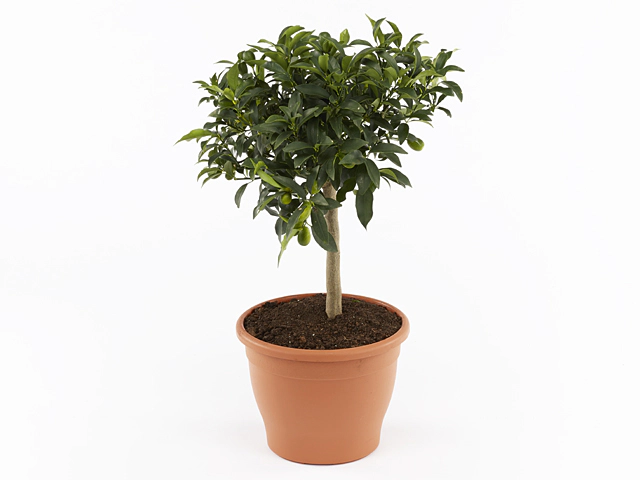Citrus margarita

| Leaf tip | Blunt/obtuse; Emarginate |
| Fruit shape | Ovall-globose |
| Leaf margin | Erose; Entire |
| Winter hardness | Not hardy (USDA-zone 9,10,11) |
| Fruit color | Orange |
| Leaf, general shape | Lanceolate |
| Leaf, scent | Unscented |
| Leaf width | 2 - 3 cm |
| Leaf surface | Smooth; Dull |
| Fruit size | 3,5 - 4 cm |
| Leaf duration | Evergreen |
| Leaf size | 7,5 - 10 cm |
| Leaf, main color | Dark green |
| Leaf colour, pattern | Unicolored |
If you're looking for a refreshing and tangy cocktail to enjoy on a warm summer day, look no further than the citrus margarita. With its vibrant orange color and deliciously fruity flavors, it's the perfect drink to sip on while lounging by the pool or hosting a backyard barbecue.
The citrus margarita gets its name from the key ingredient - citrus fruits. This delicious cocktail combines the tartness of lemons, limes, and oranges with the sweet and tangy flavors of a traditional margarita. The result is a drink that is both refreshing and satisfying.
When it comes to the appearance of the citrus margarita, the fruit used lends a vibrant orange color that instantly catches the eye. The fruit itself is ovall-globose in shape and measures approximately 3.5 to 4 cm in size. Its smooth and dull surface, along with its dark green color, creates a striking contrast against the bright orange hue of the margarita.
The leaves of the citrus margarita plant are evergreen in nature, meaning they maintain their vibrant green color throughout the year. With a length of 7.5 to 10 cm, these lanceolate-shaped leaves add to the overall appeal of the plant. The leaf width measures 2 to 3 cm and has a smooth and dull surface. However, what makes this plant truly unique is the unscented nature of its leaves, which is quite different from other citrus plants.
When it comes to the texture of the leaves, the leaf tip is blunt or obtuse, while the leaf margin can be either erose or entire, depending on the specific variety of citrus margarita. This variation in leaf shape and margin adds an interesting element to the plant, making it visually appealing and aesthetically pleasing.
If you're considering growing a citrus margarita plant, it's important to note that it is not hardy in colder climates. It is best suited for USDA zones 9, 10, and 11, where the weather is mild and frost is unlikely. Therefore, it is important to ensure that you provide the plant with the right conditions to thrive and grow.
In conclusion, the citrus margarita is a delightful cocktail that combines the flavors of citrus fruits with the classic margarita base. Its vibrant orange color, coupled with the unique characteristics of the plant, makes it a visually appealing choice for any summer gathering. So, the next time you're hosting a party or simply looking to unwind, why not try a citrus margarita? It's sure to impress your guests and leave them wanting more.
Market availability index by month:
| Jan. | Feb. | Mar. | Apr. | May | Jun. | Jul. | Aug. | Sep. | Oct. | Nov. | Dec. |
|---|---|---|---|---|---|---|---|---|---|---|---|
| 3 | 4 | 3 | 3 | 2 | 1 | 1 | 1 | 2 | 2 | 2 | 2 |